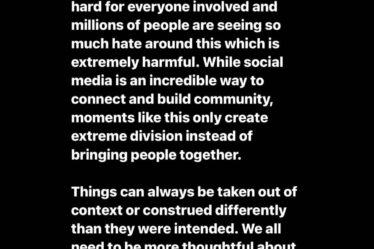
In recent years, a pandemic, cost of living crisis and on-going economic instability are just some of the global forces that have shaped and reshaped how the collective global workforce operates, from remote working to flexible hours and even mass layoffs. The so-called Great Resignation also saw employees resign en masse as companies have struggled to meet the needs of staff.
Indeed, fashion as an industry is still grappling with improving the employee experience at work, with poor experiences frequently reported by those from underrepresented backgrounds. Some 67 percent of Black employees in fashion, 65 percent of LGBTQIA+ employees, 52 percent of Latinx and 44 percent of Asian employees have reported experiencing microaggressions, in the PVH and CFDA 2021 report on the State of Diversity, Equity and Inclusion in Fashion.
Such experiences have an inevitable impact on employee retention. According to the report, 18 percent of LGBTQIA+ employees and 16 percent of Black employees, versus 9 percent of white employees, reported that they would not recommend others like them to apply for a job in the fashion industry.
Fashion as a collective is bolstering recruitment in diversity, equity and inclusion (DEI) departments within People or HR teams, with the likes of Kering, PVH Corp, Nike and Lululemon adding diversity leaders to their C-suite in recent years. However, BoF and McKinsey’s State of Fashion 2023 shared that male candidates made up nearly 77 percent of all CEO appointments in the fashion industry in 2021. The British Fashion Council’s Diversity, Equity and Inclusion Report in 2022 revealed just 10 percent of board members identify as not white, while only 7 percent of fashion businesses have a Disabled leader in the top two levels of their organisation.
“The statistics are dire when it comes to representation for people of colour. You can see it when looking operationally at a business, that the representation isn’t there. [The Outsiders Perspective] was my attempt at doing something practical and immediate to accelerate that conversation,” said Jamie Gill, founder of The Outsiders Perspective, in his opening remarks.

The Outsiders Perspective is a non-profit initiative and incubator for people of colour working outside of fashion, to better equip them to join the operational side of a fashion business. The former CEO of Roksanda, Jamie Gill, founded the initiative in 2022 and has since collaborated with the likes of Burberry, Zalando and the British Fashion Council to mentor prospective candidates with the knowledge and tools needed to transition their career into Fashion. The second edition of the incubation programme opens for applications on March 20, 2023.
Last week, BoF came together with The Outsiders Perspective to moderate a panel on “Protecting Fashion’s DEI Progress During Market Disruption”. The audience included HR managers, people teams and DEI specialists from the likes of Burberry, Victoria Beckham, Farfetch, Selfridges, ASOS, Deckers Brands and Vanguards Group.
Moderated by BoF’s Sophie Soar, the panel saw Jamie Gill joined by Ben de Pfeiffer-Key, global diversity and Inclusion manager at Capri Holdings, and Sharlene John, head of recruitment at Selfridges, to share their insights on inclusive recruitment and retention strategies in fashion. Now, BoF shares key insights from the talk.
Track Key Metrics for Increased Accountability
SJ: “[There’s] a lack of female representation and ethnicity on senior-level positions that are upwards to C-suite. For us, that’s a metric and measure that we are focusing on working on […] up to 2025. [Understand] what your goals are, then [hold] yourself accountable by publishing those levels around gender pay gap reporting every year.
“We partnered with an organisation last year that works with underrepresented young men in Central London through schools, and off the back of that, we filled the majority of our roles at Christmas on the shop floor from individuals that came from that organisation. So it’s thinking outside of the box.”
JG: “Fifty-one percent of CEOs in the 100 largest, British companies are accountants. Whatever industry they’re in — media, fashion, real estate — there’s a common professional finance background. That in itself shows there’s a skill set that could be completely transferable.
“But we don’t have a lot of that in fashion. The reality is that we are a very creative, innovative space and we lean on that design front when it comes to image, concept and brand essence. But, operationally, are we actually equipped with the business muscle to truly deliver an international, scalable business?”
Bridge the Employability Skills Gap for the Next Generation of Talent
BdPK: “We launched the Capri Holdings Foundation to remove the barriers for non-privileged students to enter the education system, especially when it comes to design, with a focus on people of colour. We partnered with four schools across North America and Europe — we have FIT, Howard and Pensole, and Central Saint Martins, providing scholarships for under-30 students who have been assessed and selected based on their financial need and creative potential.
“The numbers, in the industry, are shocking as they are. But the numbers in education are equally as shocking. So, we’re really trying to help remove the financial strain and burden on some incredibly talented designers who want to get their voices out into the world and create their own brand and really succeed.”
SJ: “[At Selfridges], we look at partnerships where we can offer qualification to an individual that wouldn’t have access [to it otherwise]. […] We sponsored three young ladies last year for a year, [who] studied to get a degree in nano tech. We paid for their education, and the caveat for that was, at the end of the qualification, they then automatically have a position in our business and they stay with us for 12 months.”
Offer Regular Training for Hiring Managers to Reduce Personal Bias
SJ: “Everyone has a bias. The important thing with hiring managers is getting them to recognise theirs, and how it can play out in the interview process. Our responsibility, in recruitment, is to explain that in a way that feels safe and comfortable for hiring managers, so when they’re in the interview process, they’re aware of it.
Everyone has a bias. The important thing with hiring managers is getting them to recognise theirs, and how it can play out in the interview process.
“We spent the majority of last year training over 600 line managers on inclusive hiring […] and a huge part of that was the unconscious, conscious bias. […] So when people are going into interview, they have got this lovely, inclusive interview pack that they feel safe to use.
“[…] What we need to be doing is having a really open dialogue and conversation, and educating our stakeholders and all hiring managers as to why we’re doing this. [At Selfridges,] we are all linked together with this golden thread of, actually we’re trying to increase diversity because we know a diverse workforce is going to yield results.”
Create a Safe Space to Listen to Your Employees
BdPK: “We spent a lot of time doing listening sessions, creating safe spaces where [employees] can come to us, share their thoughts, how they’re feeling about our initiatives, whether it’s about diversity and inclusion, or anything else that we do from an employee engagement perspective, and giving them the opportunity to tell us what that means for them.
“We have also been focusing on specific groups. For example, we did a session with parents in the business to really understand [them]. I’m not a parent, so I can’t make a decision for them based on my experience. So I want to hear from them about that, and we are building some actions around that.
”Create that community and the culture where people can connect on a human level. […] The last few years have given us a lot of us a real new sense of purpose and what value can I bring people? […] We have launched Employee Resource Groups and a mentorship programme to really focus on potential, trying to reframe people’s perception of what a successful career path looks like.”
Be Transparent About Career Paths and Opportunities for Internal Talent
JG: “We have a vast scarcity of representation in those operational to leadership roles. […] Currently, most minority groups, especially ethnic minority groups, have never seen fashion luxury as a viable career avenue. They have never understood what opportunities actually exist. They think it’s safer to take that traditional route.
“[Offer] that visibility on the excitement of a career trajectory in an operational role in fashion and luxury. I think that’s something we can all try harder on as an industry, making that case clear — what it’s like to be a COO, in a strategy function, what it’s like to in HR and up that career trajectory.
[Offer] that visibility on the excitement of a career trajectory in an operational role in fashion and luxury — what it’s like to be a COO, in a strategy function, what it’s like to in HR.
SJ: “Our internal mobility programme is almost like a careers fair, where we’re having the recruitment team connect with all of the team members in our business to understand what their career aspirations are in our business. In the last two weeks, we have had four team members from our Manchester store identify skill sets [and] they are now interviewing for roles internally.
“I think there’s absolutely a conversation to be had around internal ability and in upskilling that talent. So if we know that we’ve got somebody on the shop floor who has got a degree in fashion, but she’s actually working in our food halls, how do we support her to upscale, use that qualification and mobilise her in the business?
“One of the other things that we included is internal internships. As a business, we’ve said we’re not going to be offering internships to external candidates […] to offer them to people we currently have in our business, so we don’t lose that talent. […] And we know for us, in the business, that grade two or three is where most of our underrepresented talent sits.”
Make Your Business Case to Leaders With Data
JG: “We understand the benefit, the business case [of improving diversity and inclusion in a business]. […] So we’re presenting that and then you’re getting hit back from business leaders who don’t want to go against the grain. So, how can we convince them ultimately?
“As we all know, the data isn’t as robust as it could be [on talent demographics within the fashion industry]. […] But what we do know — the data does exist on who the fashion consumer is. We know she is 75 percent female. That is an immediate, hard statistic that you can reference. Where is she based? What is her origin? […] She’s from all parts of the world, and we are not in any way representing her operationally within business.
“The Financial Conduct Authority in April 2020 made it legislative now that all FTSE 250 businesses and upwards need to make it transparent who their executive board makeup is made up of. They need to demonstrate gender and ethnic diversity for all FTSE 250 businesses. […] It is the start of accelerating that conversation internally and referencing the best examples of best practice that you’ve seen in other industries that really drives that profitability.”
Offer Mentorship to Support and Learn from Juniors
SJ: “For me, as a mentor, it has been one of the most fruitful things that I’ve done. […] So I’m a real advocate for mentorship. I also feel that reverse mentorship has a place. We’ve conducted reverse mentorship for leaders within our business, and it’s been really beneficial for them to hear and see what it’s like to be in the shoes of underrepresented groups in our business. But it’s been done in a very safe, controlled way. So I’m a real advocate for it, as long as it’s done correctly.
BdPK: “I think really understanding what drives the next generation and actually how you can place strength is key. Reverse mentoring is a tool to do that for sure — our leadership teams are predominantly the earlier generation, so 60 percent of our demographics are millennial and below. At leadership level, that’s 100 percent Gen X and above. So really understanding and speaking to the next generation is key, but without forgetting the generations that came before.”
This feature is part of a global community partnership with The Outsiders Perspective



